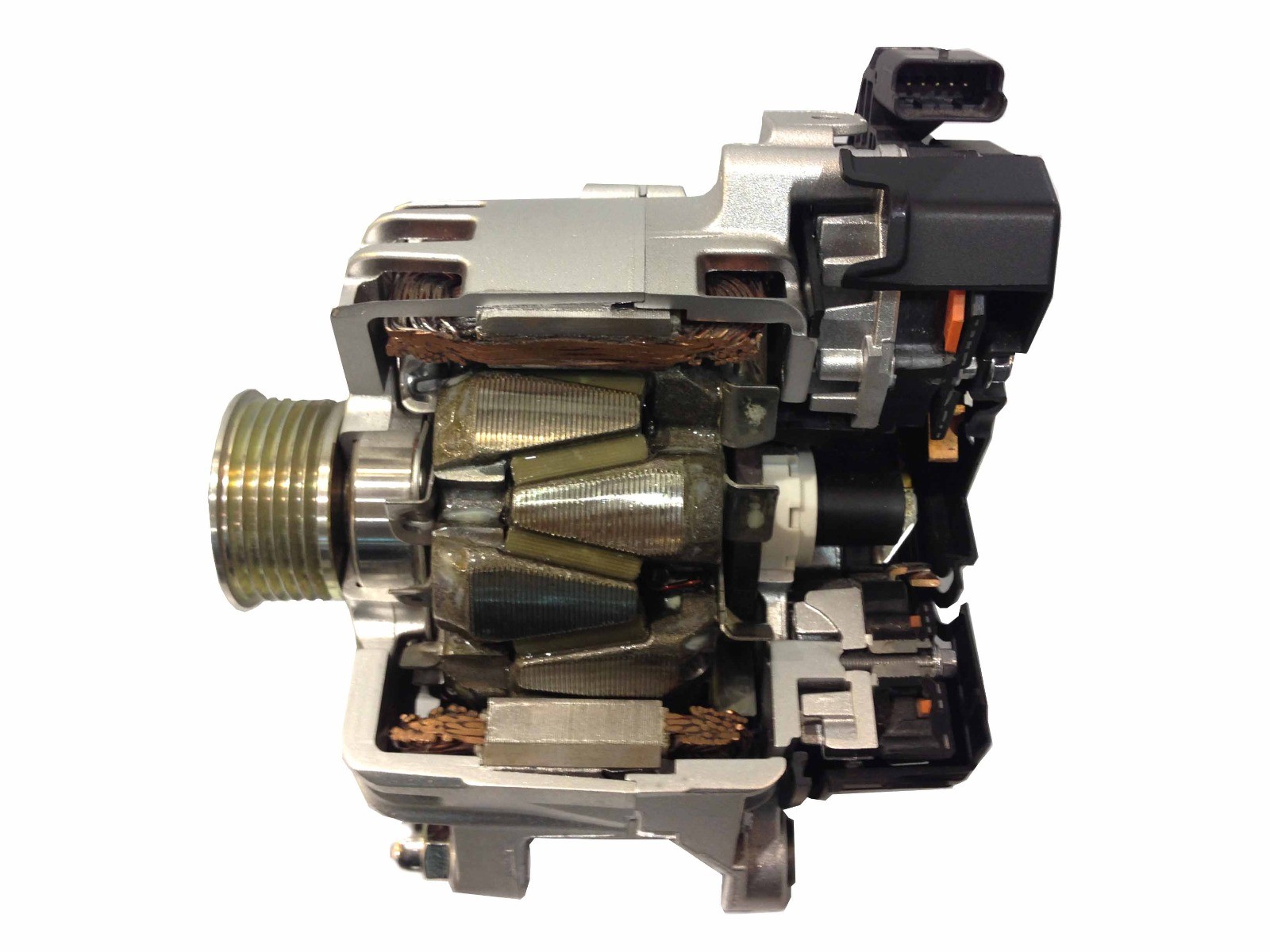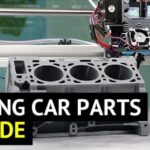You might assume your car battery is the sole provider of electrical power, but that’s a common misconception. While the battery is crucial for starting your engine, once your car is running, the car alternator takes over. This vital component generates the electricity needed to power your vehicle’s electrical systems and simultaneously recharge the battery. Historically known as a generator, the alternator operates on a similar principle, utilizing the engine’s rotation to drive a pulley and produce energy.
The alternator works in tandem with the battery to ensure a constant power supply for all electrical components in your vehicle. The energy generated by a car alternator is in the form of direct current (DC). The process begins when the alternator pulley, driven by the engine, rotates. This rotation causes alternating current (AC) to pass through a magnetic field, which then generates an electrical current. A key component called the rectifier then converts this AC to the usable DC power that your car requires.
Over the past half-century, alternator technology has advanced significantly. Early alternators primarily generated current regulated by an external component. The 1990s saw the introduction of built-in regulators, which used the dashboard warning light to initiate alternator excitation and the charging process. Modern vehicles have largely adopted sophisticated charging systems, including smart charge and CANBUS systems, controlled by the vehicle’s Engine Control Unit (ECU). These systems employ a “load request” approach. As the vehicle’s electrical demands increase, the ECU signals the alternator to increase its charging output. This advanced alternator must dynamically adjust its charge rate to accommodate fluctuating electrical loads. Consequently, diagnosing charging faults in these systems can be complex, as issues are not always directly attributable to the alternator itself.
To fully grasp the alternator’s function, it’s essential to understand its key Car Alternator Parts and their individual roles:
Regulator
The voltage regulator is a critical car alternator part responsible for managing the electrical output distributed to the battery. Its primary function is to control the charging process by precisely regulating the voltage. Regulators are designed with varying specifications and functionalities depending on the alternator system.
Rectifier
The rectifier is another vital car alternator part. It plays a crucial role in the energy conversion process within the alternator. Specifically, the rectifier converts the alternating current (AC) generated by the alternator into direct current (DC), which is the type of electricity used by your car’s electrical system and required for battery charging.
Rotor
The rotor is a central car alternator part, acting as the rotating core within the alternator. Connected to the pulley and drive belt system, the rotor spins as the engine runs. Functionally, the rotor operates as a rotating electromagnet, essential for generating the magnetic field needed for electricity production.
Slip Rings
Slip rings are essential car alternator parts that facilitate the transfer of electrical power to the rotor. They act as conductive pathways, providing direct current and power to the rotor, enabling it to function as an electromagnet.
Slip Ring End Bearing
Bearings are crucial car alternator parts that support the mechanical operation of the alternator. The slip ring end bearing is specifically designed to support the rotor shaft at the slip ring end, ensuring smooth and stable rotation.
 Alternator Cutaway Diagram Detailing Internal Car Alternator Parts
Alternator Cutaway Diagram Detailing Internal Car Alternator Parts
Stator
The stator is a stationary car alternator part that works in conjunction with the rotor to generate electricity. It consists of multiple wire coils wound around an iron ring and is positioned around the rotor. As the rotor’s magnetic field spins, it induces an electrical current within the stator coils, which is the source of the alternator’s electrical output.
Drive End Bearing
Similar to the slip ring end bearing, the drive end bearing is a car alternator part that supports the rotor shaft. Located at the drive end of the alternator, it ensures the rotor rotates smoothly and reliably, particularly under the stress of the drive belt tension.
Pulley
The pulley is an external car alternator part that connects the alternator to the engine. It is mounted on the rotor shaft and linked to the engine’s drive belt system. The pulley’s rotation, driven by the engine, initiates the alternator’s charging process by turning the rotor.
Drive End Bracket
The drive end bracket and slip ring end bracket are structural car alternator parts. The drive end bracket provides mounting and support for the alternator at the drive pulley end, ensuring secure attachment to the engine.
Slip Ring End Bracket
The slip ring end bracket, along with the drive end bracket, provides structural integrity to the alternator assembly. It supports the alternator at the slip ring end, contributing to the overall stability and durability of this crucial automotive component.
By understanding these car alternator parts and their functions, you can better appreciate the complexity and importance of this system in your vehicle. Regular maintenance and timely repair of these components are vital to ensure your car’s electrical system operates reliably and efficiently.
